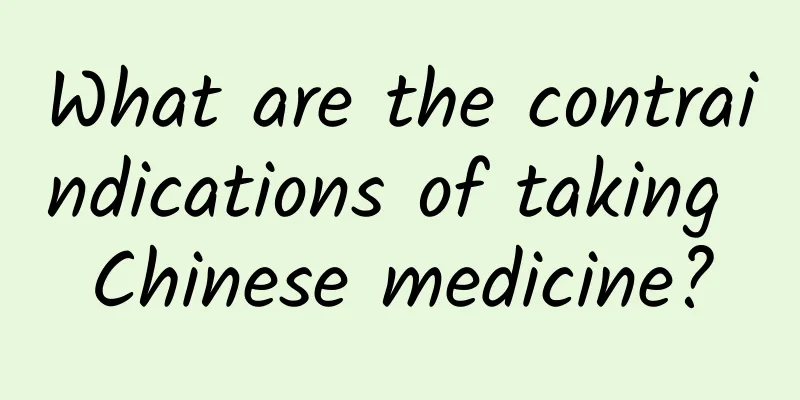The efficacy and function of lotus leaf stem

|
Everyone is familiar with lotus leaves. In the hot summer, there are lotus flowers in many lotus ponds, and under the lotus flowers are lotus leaves. The whole lotus body is a treasure. The lotus fruit, the lotus pod, has the function of clearing heat, and the effects and functions of the lotus leaf stem are no less than those of the lotus pod. Lotus leaf stems not only have the effect of lowering blood lipids and blood pressure, but people who want to lose weight can also use lotus leaves to soak in water and drink it, which has the effect of losing weight. 1. The efficacy and function of lotus leaf Traditional Chinese medicine's explanation of lotus leaves is: bitter, spicy and slightly astringent, cool in nature, enters the heart, liver and spleen meridians; fragrant and ascending. It is mainly used to treat summer heat, thirst, headache, dizziness, edema, loss of appetite and abdominal distension, diarrhea, leucorrhea, rectal prolapse, hematemesis, epistaxis, hemoptysis, bloody stool, metrorrhagia, postpartum lochia, and blood stasis caused by injury. In addition, the effects and functions of lotus leaves are as follows: 1. Lowering blood lipids Nelumbo nucifera is a biological alkaloid extracted from lotus leaves. Nelumbo nucifera can dilate blood vessels, clear away heat and relieve summer heat, and has the effect of lowering blood pressure. 2. Prevent and treat cardiovascular diseases Lotus leaf is a food that can be used as both medicine and food. The flavonoids rich in lotus leaf are scavengers of most oxygen free radicals, which can increase the activity of SOD (superoxide dismutase) and reduce the production of MDA (lipid peroxide malondialdehyde) and 0X-LDL (oxidized low-density lipoprotein). It can increase coronary flow, antagonize experimental myocardial infarction, protect against acute myocardial ischemia, have significant effects on the treatment of coronary heart disease, hypertension, etc. It also plays an important role in lowering diastolic blood pressure, preventing and treating arrhythmias and cardiovascular diseases. 3. Weight loss The bioalkali in lotus leaves has the effect of lowering blood lipids and is often used clinically to treat obesity. The principle of lotus leaf weight loss is that after taking it, it forms a layer of fat isolation membrane on the intestinal wall of the human body, which effectively prevents the absorption of fat, reduces weight fundamentally, and controls rebound more effectively. 2. Nutritional components of lotus leaves Lotus leaves are very rich in nutrients. They contain a variety of biological alkaloids such as nelumbosine, protonelumbosine and nelumbosine, as well as vitamin C. In addition, they also contain citric acid, malic acid, gluconic acid, oxalic acid, succinic acid and other alkaline components with anti-mitotic effects. Below we will tell you in detail the nutritional components of lotus leaves. 1. Bioalkalis are an important type of active ingredient in crude drugs. More than 10,000 species have been isolated so far, of which more than 80 have been used clinically. For example, berberine in Coptis chinensis is used for antibacterial and anti-inflammatory effects, ephedrine in Ephedra sinica is used for relieving asthma, reserpine in Rauvolfia oleifera is used for lowering blood pressure, camptothecine in Camptotheca acuminata and vincristine in Catharanthus roseus are used for anti-tumor effects, etc. 2. Vitamin C has antioxidant and free radical resistance, and inhibits the formation of tyrosinase, thereby achieving the effect of whitening and lightening spots. 3. Citric acid is an important compound in the physiological process of converting fat, protein and sugar into carbon dioxide. It has the effect of preventing and eliminating skin pigmentation. 4. Malic acid occupies a special position in the material metabolism pathway. It can directly participate in human metabolism and be directly absorbed by the human body. It can provide energy to the body in a short period of time, eliminate fatigue, and play a role in anti-fatigue and rapid recovery of physical strength. |
<<: The efficacy and function of Guanzhong charcoal
>>: The efficacy and function of Amaranthus australis
Recommend
Taking sports equipment with you on the train? Safety tips for carrying and checking in your luggage
With the rise of the national fitness craze, peop...
Without giant pandas and leopards, how could it become China's first nature reserve?
If you drive 100 kilometers west from Guangzhou, ...
The efficacy and function of radix scutellariae
Vermicelli root is a commonly used medicinal mate...
The efficacy and function of small madder
Rubia cordifolia is a common Chinese medicine wit...
The efficacy and function of black seed grass
Only when we understand the main ingredients of a...
Does exercising have to last more than 30 minutes to lose weight? 29 minutes won’t do?
" Exercise for less than 30 minutes is equiv...
Sun Wukong couldn't get out of Tathagata's palm, and there's actually a physics reason behind this!
The Arctic tern is perhaps the most light-loving ...
The efficacy and function of iron armor grass
Autumn is a dry season. People need to nourish th...
The efficacy and function of Lentil Flower [Picture]
The Chinese medicinal material Lentil flower [pic...
Vanishing birdsong: How to track the impact of climate change on the region's soundscape?
The International Department of the China Biodive...
What grass can cure gynecological diseases
In life, many women have some gynecological disea...
With a charging and discharging time of more than 6 hours, how can flow batteries achieve long-term energy storage?
□ Zhao Jialiang Recently, the Sichuan Provincial ...
Can ginger, Polygonum multiflorum and black sesame really help grow dark hair?
Every time I look in the mirror and find a few ne...
The efficacy and function of monkey date
Monkey gall is a relatively familiar traditional ...









